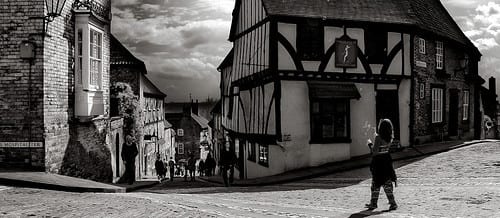Reading Theatre Archaeology has opened my eyes to looking at a site differently. “Do not begin with the question ‘what is it?’ Instead ask what does it do? (Pearson et al, 2001, 53) This made me think back to the cathedral, and when asking the question ‘what does it do?’ it opens all sorts of possibilities. The Cathedral: offers a place of worship,is a symbol of Lincoln, attracts tourists and is a place of architectural beauty. Many more purposes are to be discovered when you ask the question What does it do? rather than What is it? Linking with the Tim Etchells text on certain fragments, the Cathedral can be seen to someone differently depending on their personal history, Etchells talks of certain places in which he talks about and he gives them their own names “names dreamed up by the group of us when we first moved here” (Etchells 1999, 78) suggesting a place can have personal history and I am quite interested in incorporating some of that into our final piece should we aim to do a misguide as I believe personal history is just as important to a place than general history. One way we can aim to do that is to ask passersby to the Cathedral what connection they have to the place; Did they get married there? Is it the first place they ever visited in Lincoln? And perhaps create a mythogeographic misguide based on people’s emotional attachments to the place.
Pearson, M. Shanks, M. (2001) Theatre Archaeology. London: Routledge
Etchells, T. (1999) Certain Fragments. London: Routledge
